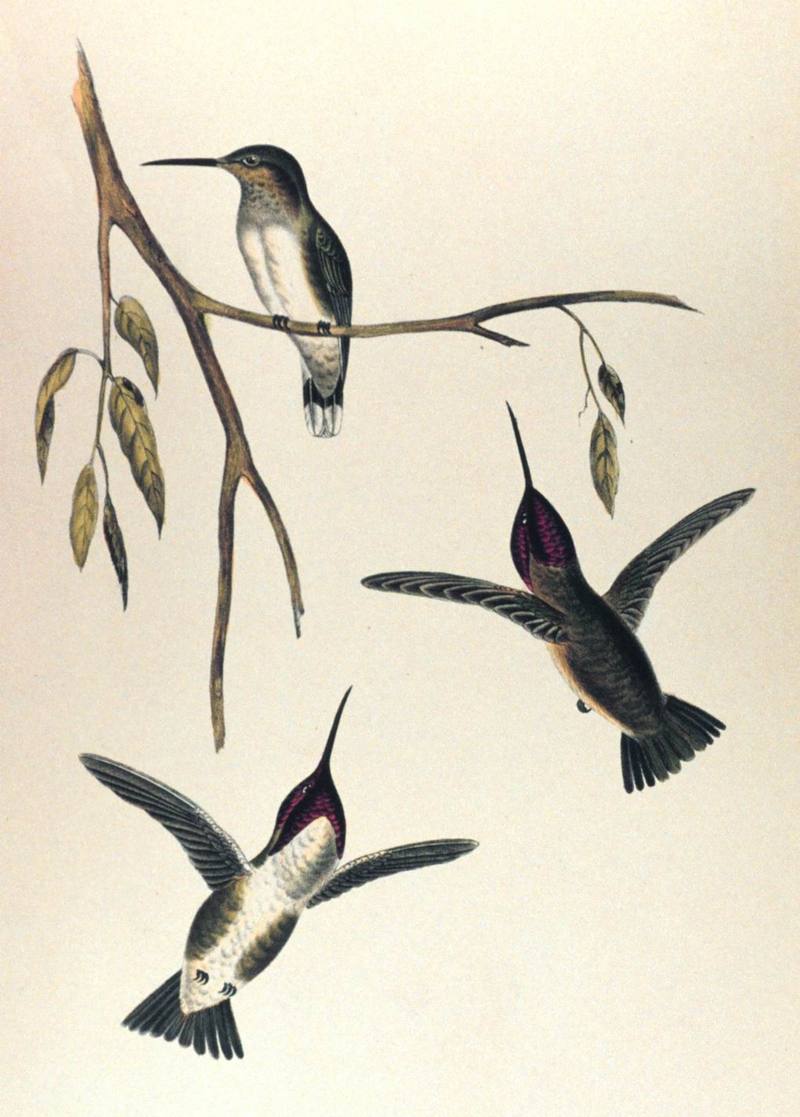|
| 질의: black back | 결과: 452번째/1141 | |
[Illust] Costa's Hummingbird (Calypte costae) (코스타벌새)
| 제목: | [Illust] Costa's Hummingbird (Calypte costae) (코스타벌새)
| | 올린이: | Phoby (phoby@hanafos.com)
| |

| 해상도: 1020x1424
파일크기: 165625 Bytes
촬영일: 2005:03:13 01:47:50
등록시간: 2005:03:13 01:45:03
|
Atthis costae, Reich. Coste's Humming Bird. This image was included in: Reports of Explorations and Surveys .... Volume X. 1859. Plate XIX. P. 35 of U. S. Pacific Railroad Explorations and Surveys near the 35th Parallel. Call Number F593 .U58 1855 .
The Costa's Hummingbird (Calypte costae) is a species of hummingbird.
The Costa's Hummingbird is very small, a mature adult growing to only 3 to 3½ inches in length. The male Costa's has a mainly green back and flanks, a small black tail and wings, and patches of white below their gorgeted throat and tail. The male Costa's Hummingbird's most distinguishing feature is its vibrant purple cap and throat with the throat feathers flaring out and back behind its head. The female Costa's Hummingbird is not as distinct as the male, having grayish-green above with a white underbelly.
The Costa's Hummingbird is fairly common in the arid brushy deserts and any nearby gardens of the Southwestern United States and the Baja California Peninsula of Mexico.
Image ID: libr0172, Treasures of the NOAA Library Collection
Location: Western United States
Photographer: Archival Photograph by Mr. Sean Linehan, NOS, NGS
Photo Source:
The NOAA Photo Library http://www.photolib.noaa.gov
The National Oceanic & Atmospheric Adminstration (NOAA) http://www.noaa.gov/
|
댓글 |
|---|
| | 손님 |
|
| Costa's Hummingbird (Calypte costae) |
^o^
동물그림창고 똑똑전화 누리집
^o^
|
|
|